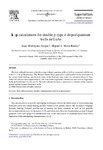
Please use this identifier to cite or link to this item:
http://ricaxcan.uaz.edu.mx/jspui/handle/20.500.11845/633Full metadata record
| DC Field | Value | Language |
|---|---|---|
| dc.contributor | 39945 | es_ES |
| dc.contributor.other | https://orcid.org/0000-0003-0087-8991 | - |
| dc.coverage.spatial | Global | es_ES |
| dc.creator | Rodríguez Vargas, Isaac | - |
| dc.creator | Mora Ramos, Miguel | - |
| dc.date.accessioned | 2018-08-13T16:20:21Z | - |
| dc.date.available | 2018-08-13T16:20:21Z | - |
| dc.date.issued | 2006-07-11 | - |
| dc.identifier | info:eu-repo/semantics/publishedVersion | es_ES |
| dc.identifier.issn | 0749-6036 | es_ES |
| dc.identifier.uri | http://hdl.handle.net/20.500.11845/633 | - |
| dc.identifier.uri | https://doi.org/10.48779/m67t-1y67 | - |
| dc.description.abstract | The hole subband structure in double p-type -doped quantum wells in GaAs is computed with the use of the 4 × 4 k · p Hamiltonian. The Thomas–Fermi–Dirac approach is implemented for the description of the valence band bending, and the hole states at the Brillouin zone center are calculated along its lines, within the effective mass approximation. The zone center eigenstates obtained are then used to diagonalize the k · p Hamiltonian for non-zero k. The hole subband structure is analyzed as a function of the impurity density and the distance between wells. | es_ES |
| dc.language.iso | eng | es_ES |
| dc.publisher | Elsevier | es_ES |
| dc.relation | https://doi.org/ 10.1016/j.spmi.2006.05.006. | es_ES |
| dc.relation.uri | generalPublic | es_ES |
| dc.rights | Atribución-NoComercial-CompartirIgual 3.0 Estados Unidos de América | * |
| dc.rights.uri | http://creativecommons.org/licenses/by-nc-sa/3.0/us/ | * |
| dc.source | Superlattices and Microstructures, Vol. 40, 2006, Pág. 100–112 | es_ES |
| dc.subject.classification | CIENCIAS FISICO MATEMATICAS Y CIENCIAS DE LA TIERRA [1] | es_ES |
| dc.subject.other | Hole subband structure | es_ES |
| dc.subject.other | Double -doped quantum wells | es_ES |
| dc.subject.other | k · p approximation | es_ES |
| dc.title | k · p calculations for double p-type -doped quantum wells in GaAs | es_ES |
| dc.type | info:eu-repo/semantics/article | es_ES |
| Appears in Collections: | *Documentos Académicos*-- UA Física | |
Files in This Item:
| File | Description | Size | Format | |
|---|---|---|---|---|
| k p calculations for double.pdf | 1,27 MB | Adobe PDF |  View/Open |
This item is licensed under a Creative Commons License
